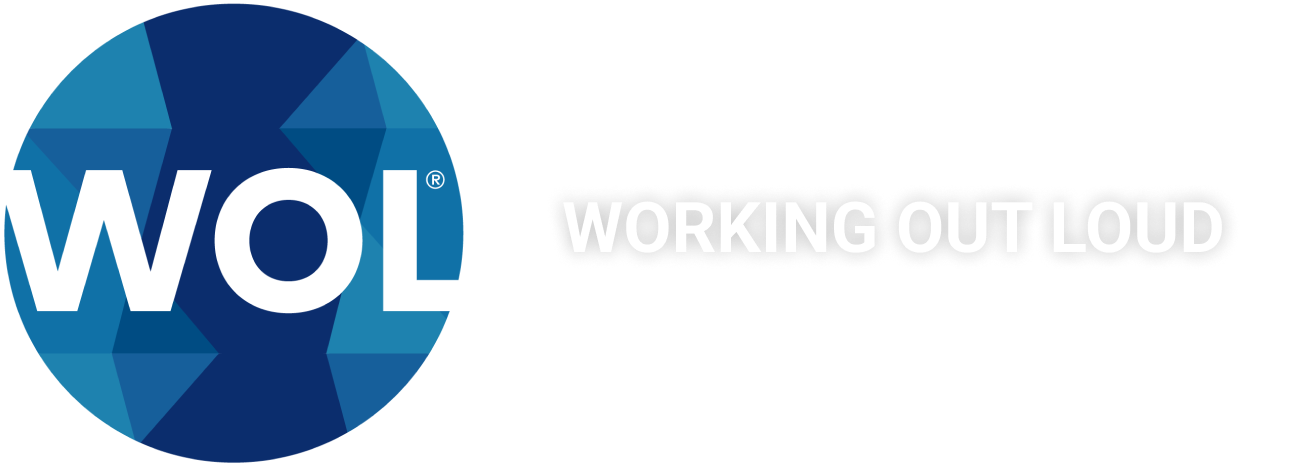The Working Out Loud Goal Clinic (Part 2 of 2)
The goal clinic helps you choose your goal in a WOL Circle and see how the method can bring your goal to life.
In a previous post, I described how Weeks 1 to 6 help with a specific goal. In this post, I’ll share what happens in Weeks 7 to 12 and what happens in the rest of the clinic.
Even if you can’t join a goal clinic, my hope is you can use these posts to make progress and have a good WOL Circle experience.
An example: My current goal
As I described last time, my current goal is to “Create a new non-profit program for men” in which men will build skills and relationships that enable them to reframe and reinterpret what it means to be “a good man.” (The program is motivated by Of Men and Boys by Richard Reeves, which describes the high rates of suicide and substance abuse for men, along with the decline in college enrollment and participation in social activities, among other issues.)
This example could easily be any project you need to get done or idea you want to explore. I use my own project so I can be specific about how each week can be used to make progress.
Using a WOL Circle to make progress
Last week, I shared how the structure, shared accountability, and support of a Circle can you help you take action and make progress. Here’s how a Circle can be used in Weeks 7 to 12.
Week 7: Be purposeful
I write a “Letter from My Future Self” which forces me to think longer term and answer questions I’ve avoided so far: What would “success” look like? What, truly, are my motivations for doing this?
I put my letter inside my closet door where I will see it every day, and I keep reflecting on what I wrote.
Week 8: Make it a habit
This week makes me realize my efforts are too ad hoc. I work on my goal “when I can” and days can go by without any action at all. Am I serious about this goal? Or do I just like talking about it but not actually doing the work?
I use the meeting to be more disciplined in my approach. I set aside time in my calendar; I reach out to people on my list who have run related programs. Later, I write a draft outline of the program content.
As a result, in one week I exchange ideas with experts in the US, Germany, and Kenya. These ideas help me clarify what my program will do— and what it won’t do.
Week 9: Explore more original contributions
Ironically, this week makes it clear to me that I’m not working out loud about my goal. So I commit to writing more (including this post!) and draft a list of topics that might be useful to others interested in men’s issues.
My new “discipline” leads me to reach out to a connection in Germany who works with over a hundred universities, including researchers on men’s topics. He graciously offers to collaborate with me on a live information session on May 7th and sends me a list of things I need to prepare before then. The deadline and his list sharpen my focus and further increase my motivation. The program “starts to feel real.”
Week 10: Practice vulnerability
I decide to work towards a pilot in September, 2025, and the doubts immediately come to the surface. Will anyone join? Will they like it? What difference will it make? How will I measure benefits? Who am I to work on this anyway?
Embracing the theme of vulnerability, I talk to more men (and women) about the program. My “elevator pitch” is terrible. It’s confusing and long. But each conversation clarifies my thinking and how I talk about the program.
I also start to make a list of things I don’t know and need help with, and I begin to reach out to people who may be able to advise or contribute in some way.
Week 11: Imagine the possibilities
When I first talked with my wife about my goal she told me not to have any ego in this project, and I like her advice. Yet this week is about thinking bigger, so I search for movements that are more mission-led than person-led.
I attend my first Alcoholics Anonymous meeting at the invitation of a friend. Few people know about the founders and yet the program is one of the most successful and sustainable change programs on the planet, helping millions. I leave with many ideas and lessons, and I’m filled with inspiration to make some kind of difference.
Week 12: Reflect and celebrate
The end of a Circle is bittersweet. We’ve been through a lot together. I’m feeling grateful for the people in my Circle and everyone who encouraged, challenged, and helped me.
My Circle helped me “bring my idea to life”—and I enjoyed the journey along the way. Yet as much as I’ll miss the weekly meetings, I know I have the skills, relationships, and mindset to keep going and continue to make progress.
The rest of the Goal Clinic
In a goal clinic, after I describe my goal and how I use a Circle, I ask participants to share their ideas for their own goals.
Most have an idea or even a few ideas. What they tend to lack is confidence in what they chose, or confidence in themselves that they should be “allowed” to work on it.
In the clinic, even before their first Circle meeting, they get a chance to feel the encouragement and support of other people in the program. They’re clearer on what they want to do and more motivated to try something a bit more aspirational. They’re ready for Week 1, ready to take their first steps.
I hope you found these goal clinic posts useful. If you ever have a question about the clinic, or about your own goal in a WOL Circle, please feel free to contact me via LinkedIn or at john.stepper@workingoutloud.com.
The goal clinic can help you make the most of your WOL Circle. (Click here for Part 1 of this two-part series.)


